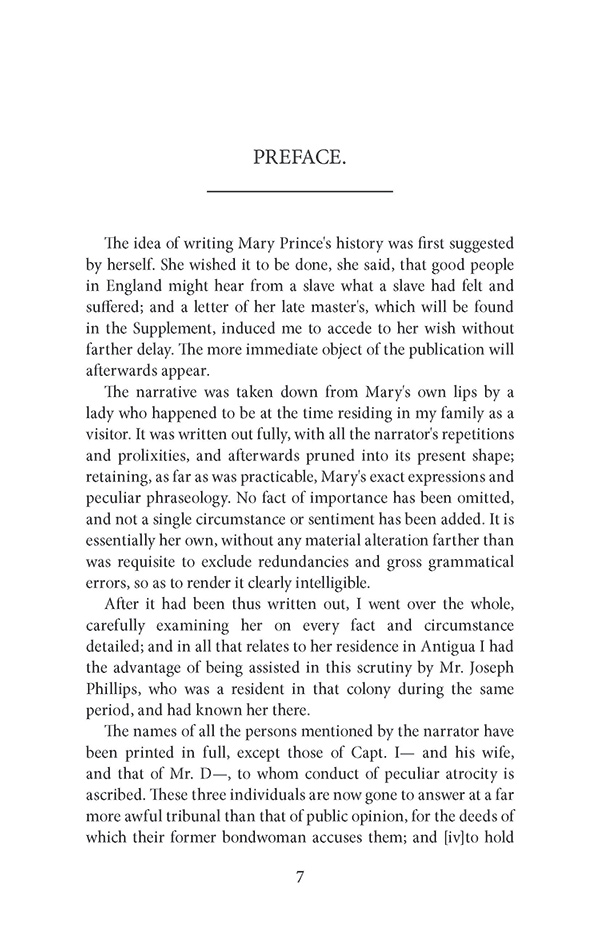

Although the text seeks to communicate the authenticity of her narrative, the involvement of these white abolitionists may have influenced what Prince chose to share and how it was conveyed. Susanna Strickland transcribed Prince’s narrative. Thomas Pringle encouraged her to share her story and acted as editor. Her narrative was produced with the help of two abolitionists involved in London’s Anti-Slavery Society, seeking to gain sympathy for the cause. Her account of the gendered violence and abuse of slavery proved influential in garnering support for the growing anti-slavery movement in England.Īlthough the book is said to be “related by herself,” Prince’s position as a formerly enslaved person limited her ability to write and publish (although she had learned to read). Princes narrative suggests that the oppression that women slaves. The History of Mary Prince, A West Indian Slave was the first detailed description of the experiences of a female enslaved person in the Caribbean. We chose The History of Mary Prince because the types of labor that Prince performed. Mary Prince was one of the slaves who worked in the salt ponds of the Turks and Caicos Islands. Not so well known was the salt industry, which flourished in large measure because of slave labor. The Caribbean triangle trade of sugar, molasses, and rum was a big part of the colonial economy.

Title page from The History of Mary Prince, a West Indian Slave, by Mary Prince. Mary Prince: Understanding The Caribbean Slave Narrative.


 0 kommentar(er)
0 kommentar(er)
